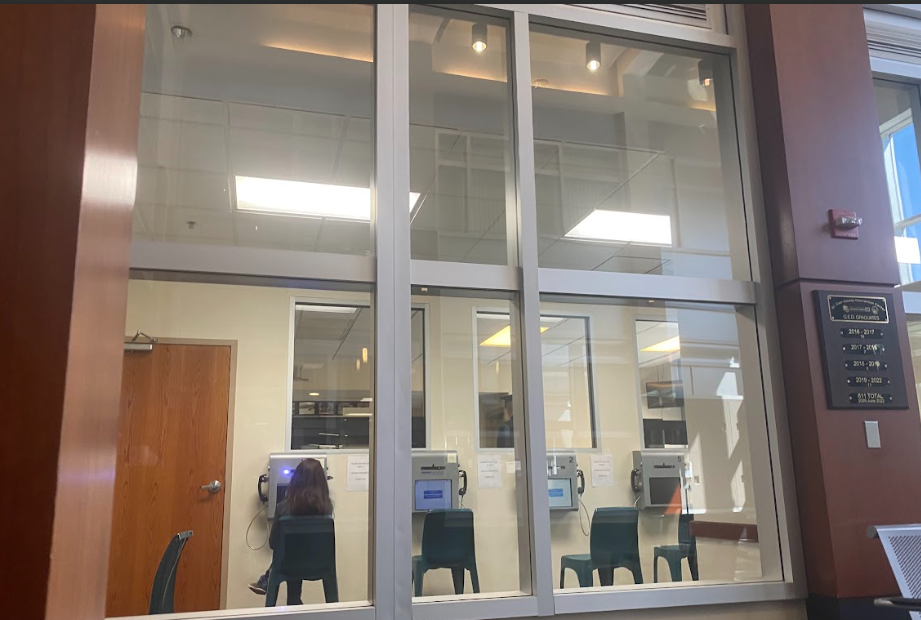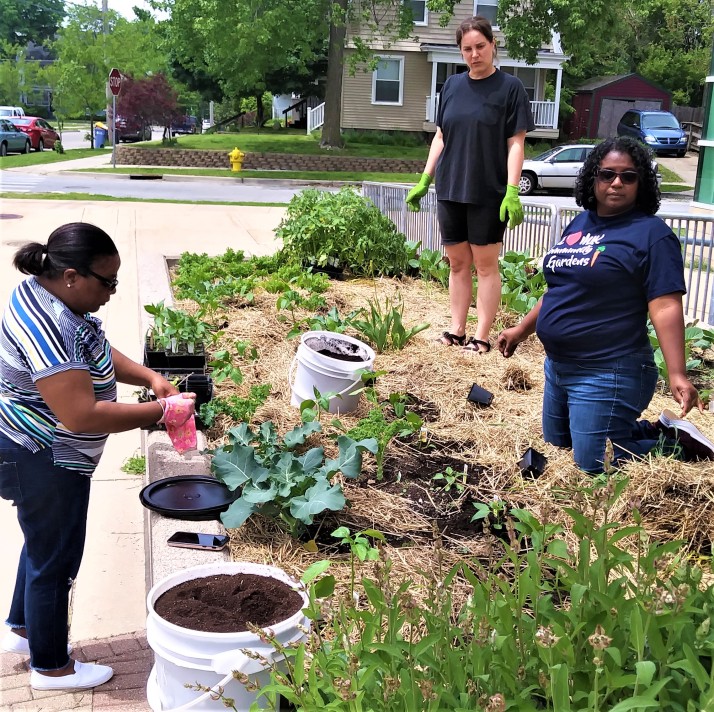New Database Makes Searching for Chemical, Climate Data Faster, Easier
Reposted from Public Health Watch
Public Health Watch and three partners today are launching FencelineData.org, a revolutionary tool that will make it easier for journalists, community advocates, researchers and members of the public to find information on companies that release harmful chemicals and contribute to climate change.
The tool will be of special interest to fenceline communities — neighborhoods situated near pollution sources that often experience the worst health effects from toxic emissions.
Instead of searching individual government databases that can be difficult to navigate and interpret, you can now access federal data on chemical and greenhouse-gas emissions and enforcement actions in one place. The database, assembled in collaboration with DataKind, Until Justice Data Partners and Material Research L3C, allows you to search for facilities by ZIP code, substance or parent company to see how industrial emissions affect your community and our planet.
See four examples of how the tool can be used. There’s a section at the bottom for analysts who want to dig even deeper into the data.
Toxic Chemicals
Question: There’s a factory down the street from my children’s high school in Chicago, and I’m worried that it might be affecting their health. How do I find out what chemicals it’s releasing? What are the potential health impacts of those chemicals? Has the facility violated the law?
1. Go to FencelineData.org.
2. Click on the “Facilities” tab.

3. Type in the ZIP code and click “Find Facilities”.

4. Click on the facility with the address closest to the factory you’re interested in.

5. Use the map to confirm that you’ve chosen the correct facility.

Findings: The BWAY Corp facility in the Little Village neighborhood of Chicago released 43,095 pounds of chemicals into the air in 2022. Its biggest release was 16,880 pounds of glycol ethers, which can cause fatigue and nausea with long-term exposure. BWAY Corp also released 958 pounds of ethylbenzene, a possible carcinogen. The facility, also known as Mauser Packaging Solutions, transferred an additional 14,640 pounds of chemicals to another location. The Environmental Protection Agency most recently fined the BWAY Corp $140,000 on 09/30/2019 for having faulty equipment that leaked chemicals.

Climate Change
Question: I live in a part of Jacksonville, Florida, that’s prone to flooding, and I’m worried that climate change will make it worse. I pass a manufacturing plant on my way to work. Does it contribute to global warming?
1. Click on the “Facilities” tab.
2. Type in the ZIP code of the facility and hit “Find Facilities”.

3. Click on the facility with the address closest to the manufacturer you’re interested in.
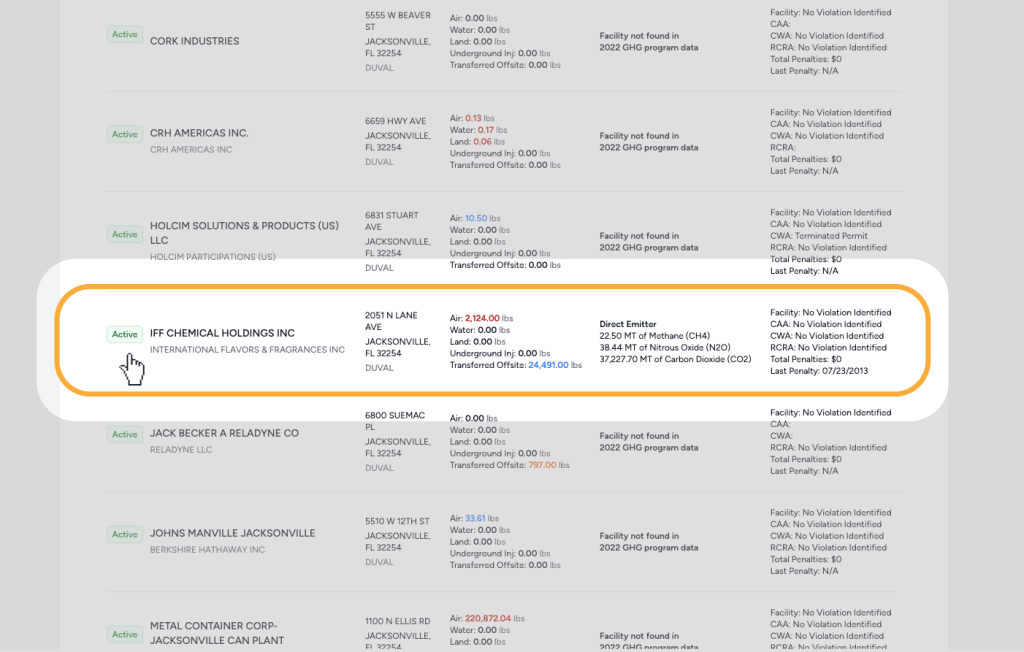
4. Use the map to confirm that you’ve chosen the correct facility.

Findings: IFF Chemical Holdings Inc in Jacksonville released nearly 37,600 metric tons of carbon dioxide, the primary cause of climate change. That’s equivalent to the combined tailpipe emissions of 8,949 cars in a year. It also released 41 metric tons of nitrous oxides and 24 metric tons of methane, two other greenhouse gases.
Substances
Question: Ammonia is a colorless gas with a sharp odor that is used to make plastics, pesticides and other products. High levels can burn the mouth, nose, eyes and throat, and chronic exposure can permanently damage the lungs. What’s the biggest ammonia polluter in the U.S.?
1. Search “ammonia” in the “Substances” tab.
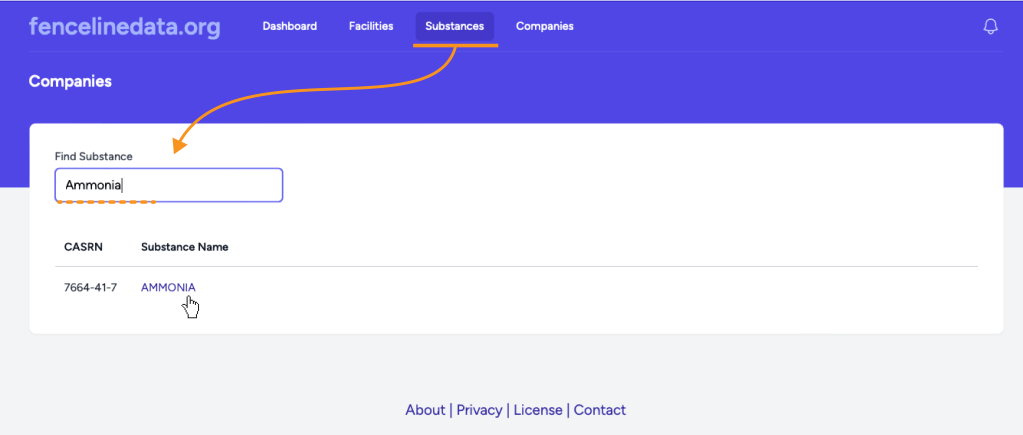
Findings: Basin Electric, which operates a coal-fired power plant in North Dakota, released the most ammonia in 2022 — almost 18 million pounds.

Companies
Question: Which chemicals does my car manufacturer release, and in what amounts?
1. Search “Ford” in the “Companies” tab and select “Ford Motor Co”.
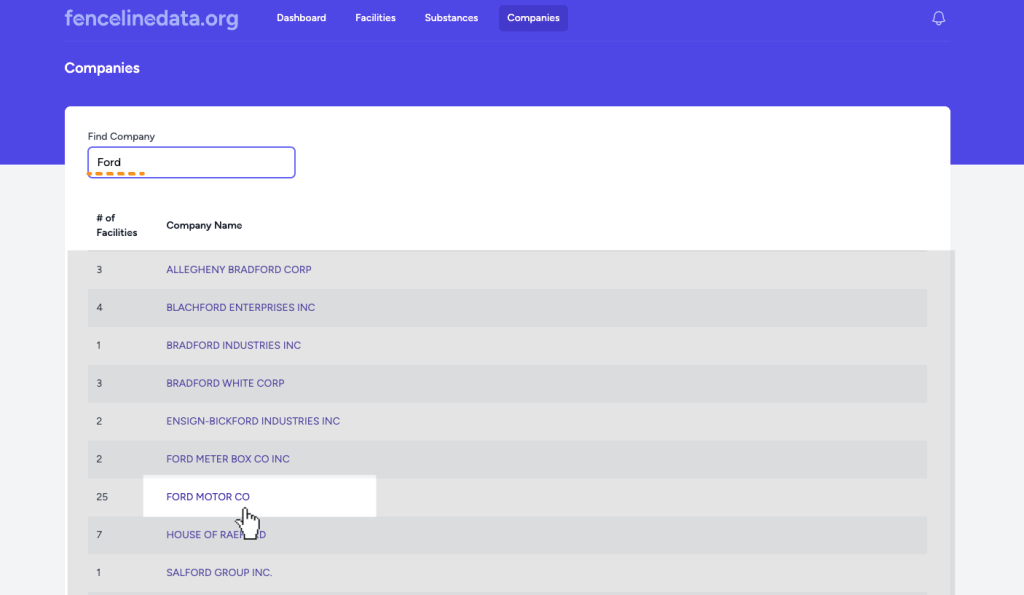
Findings: Ford facilities around the U.S. in 2022 collectively released more than 600,000 pounds of butyl alcohol, a sweet-smelling chemical that can irritate the eyes and cause headaches, dizziness, nausea and vomiting. Ford plants also released more than 586,000 pounds of 1,2,4-Trimethylbenzene, which can affect the eyes, skin and respiratory system, and almost 431,000 pounds of xylenes, which can attack the kidneys and the nervous, respiratory and cardiovascular systems with chronic exposure.
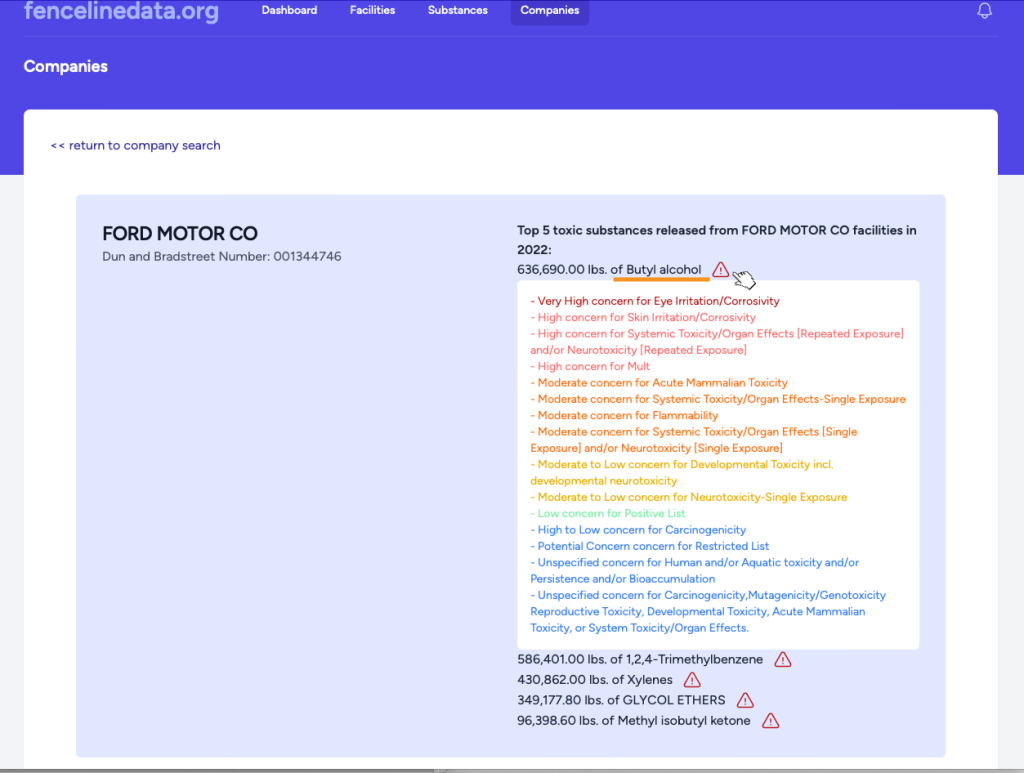
Want to Go Deeper?
Question: Which of the “Big 3” American car manufacturers contributed most to climate change and released the highest amount of chemicals in 2022?
1. Search “General Motors” in the “Companies” tab.

2. Click on the first GM facility that appears: DMAX LTD.

3. Download the Toxics Release Inventory data for DMAX LTD for 2022.

4. Click the back arrow on your web browser to return to the GM LLC page.
5. Download the 2022 data for each of GM’s 24 facilities.
6. Repeat steps 1 through 5 for Ford Motor Co’s 25 facilities and FCA US LLC’s (now known as Stellantis) 15 facilities.
7. Combine your CSV files by parent company.
8. To find which company released the most toxic chemicals, find the sum of the “Total toxic substance releases” column for each company. Then compare each company’s total. Do the same for CO2 releases and fines.
9. Now put the differently-sized companies on the same scale. Take the total toxic releases and divide it by the number of facilities for each company. This gives you an average amount of chemicals released per facility. Repeat with CO2 and penalties.
Findings:
- Only GM reported polluting water and land in addition to air. (Because facilities calculate emissions data and self-report to the EPA’s Toxics Release Inventory, this may not reflect actual emissions).
- Ford was the biggest CO2 polluter (439,636 metric tons). But Stellantis released the most CO2 per facility — 20,878 metric tons.
- GM was the biggest chemical polluter (2,780,774 lbs.). It released 115,866 lbs. per facility.
Isabel Simpson contributed to this story.
ABOUT US
Public Health Watch is a nonprofit, nonpartisan investigative news organization that focuses on threats to America’s well-being.
2110 Ranch Road 620 South
#340762
Austin, TX 78734
Contact us: info@publichealthwatch.org









